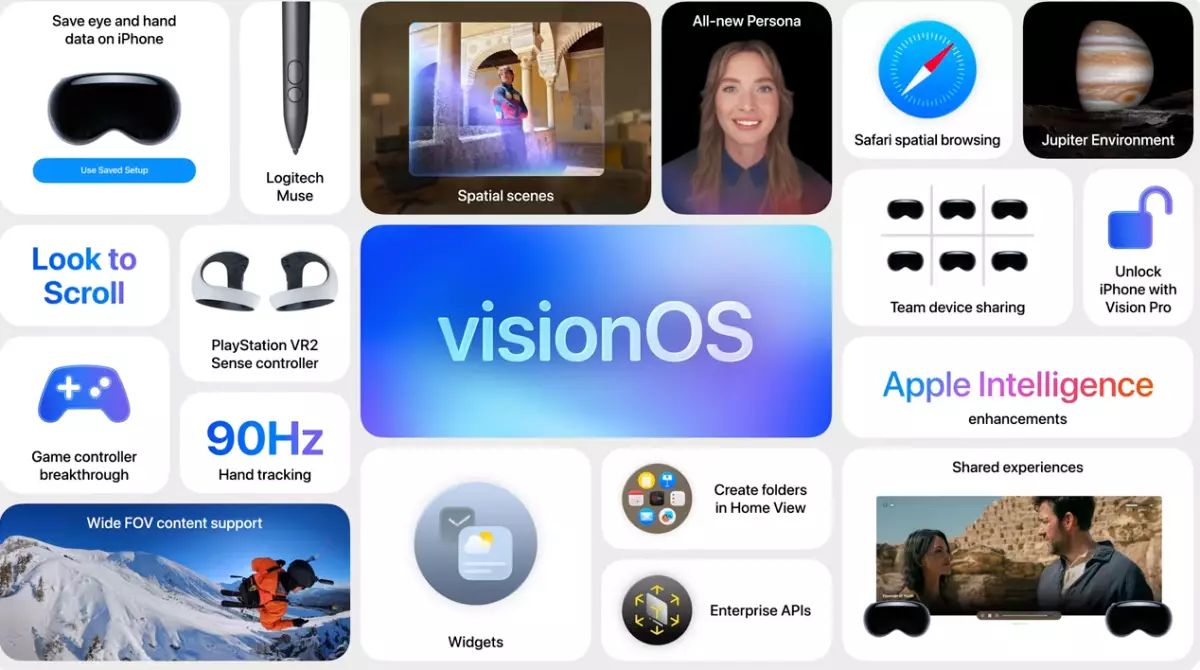Apple’s relentless pursuit of innovation has once again reached new heights with the release of visionOS 26, the operating system that fuels its groundbreaking mixed reality headset, the Apple Vision Pro. This update is not merely a series of incremental enhancements; it represents a significant leap forward in creating an immersive digital environment that seamlessly integrates with our physical world. At its core, visionOS 26 emphasizes personalization, functionality, and enhanced interactions through new technological advancements that promise to redefine user experiences—both at home and in professional settings.
Transforming Widgets into Spatial Experiences
One of the standout features of visionOS 26 is the transformation of standard widgets into spatial tools that provide personalized information in a uniquely engaging manner. Rather than adhering to a dull, flat interface, these widgets are designed to inhabit our physical spaces, allowing users to customize their size, color, and depth. Imagine customizing your digital clock or weather app so that it not only displays pertinent information but does so in a way that blends into where you’re sitting, making it feel like an intrinsic part of your environment. This innovation is not just aesthetic; it fundamentally shifts how we interact with information, allowing it to be more accessible and relevant to our current context.
Enhancing Visual Storytelling Through AI
In accordance with the advances in AI technology, Apple has incorporated a new algorithm within the visionOS Photos app that elevates how we perceive our images. By leveraging computational depth, the app offers a multi-dimensional perspective on standard 2D photos. This feature allows images to become dynamic almost, inviting users to “lean into” the visuals and explore different angles, thus blurring the lines between static imagery and responsive storytelling. This capability addresses the evolving nature of photography and personal expression; as we move further into a digital-first world, such technologies create an opportunity for more immersive personal storytelling.
Immersive Browsing: A Game Changer for the Web
Moreover, Apple is reimagining the web browsing experience through spatial browsing in Safari. By eliminating distractions and allowing photos to emerge as users scroll, this feature enhances online engagement in ways traditional browsing fails to achieve. The capacity for developers to integrate this immersive experience into their applications marks a monumental shift, leveraging spatial technology to redefine standard user interactions on the web. Users can now experience content as if it’s surrounding them, igniting a new flame of curiosity and exploration fostered by a more engaging online presence.
AI Personas: Bringing Digital Avatars to Life
Perhaps one of the most intriguing advancements is the improved AI-generated Personas. Serving as highly lifelike digital avatars in video calls, the updated Personas are designed to represent individuals with remarkable fidelity. By harnessing volumetric rendering and machine learning, these avatars encapsulate not only a person’s appearance but their unique characteristics. This innovation is monumental for both personal and professional interactions, helping bridge the gap between physical presence and virtual engagement—all created instantaneously on-device, promoting privacy and immediacy in an increasingly digital world.
Empowering Enterprise Collaboration
For organizations, visionOS 26 is equally groundbreaking. It introduces collaborative functionalities that allow teams to engage with 3D designs interactively. Solutions like Dassault Systèmes’ 3DLive app exemplify how enterprises can leverage mixed reality to visualize concepts with colleagues across various locations. The ability to share devices securely and maintain personalized user settings reinforces a collaborative culture that values both teamwork and efficiency. Additionally, the “for your eyes only” mode fortifies data security, ensuring sensitive materials remain confidential while still enabling powerful collaboration capabilities.
Global Accessibility and Eye Tracking Technology
Finally, Apple is extending the visionOS 26 experience to a global audience by adding support for several languages, making this breakthrough technology accessible to a wider user base. Further enhancing user interaction, the integration of eye tracking allows individuals to scroll through apps intuitively, simplifying navigation to a mere glance. This touch of intuitive technology not only streamlines interactions but also aligns with Apple’s mission to create an inclusive user experience.
Overall, fostering innovation through visionOS 26 places Apple at the forefront of the mixed reality sphere. With its rich integration of spatial capabilities into everyday tasks and professional environments, Apple opens the door to a future where digital and physical experiences converge seamlessly, heralding a new epoch in human-computer interaction.

